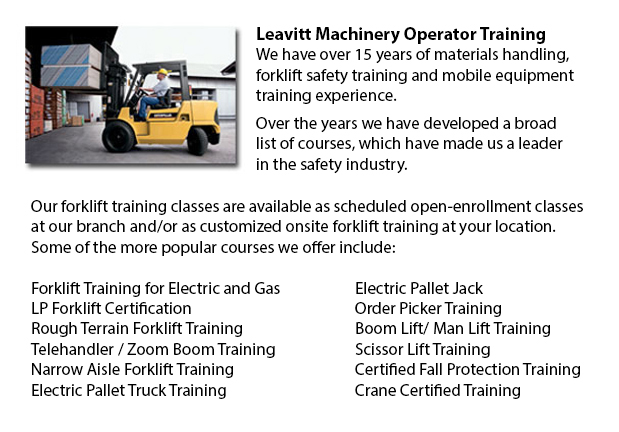
Hyster Forklift Training Richmond Hill - As a global leader in forklift trucks, Hyster continually strives for excellence in product quality and safety. However, it began as a producer of lifting machinery as well as winches. Most of its production was concentrated in the northwest United States and dealt mostly with the wood and logging industry. A couple years after the 1st forklift trucks were invented Hyster became synonymous with quality manufacturing. Over the preceding 80 years Hyster has continued to get bigger and develop its product line. The growth of its products coupled with its wish to stay service oriented has allowed Hyster to grow into the global player it is now.
In the period between 1940 and 1960, Hyster sustained its progress throughout the western world. In 1946, Hyster opened a plant in Danville, Illinois that was totally dedicated to bulk producing trucks. This allowed Hyster to force its expenses down and, at the same time, offer a better quality product at industry aggressive rates. In 1952, Hyster began its first foray in to the international production market through opening its first plant in the Netherlands. The Netherlands plant was originally designed to produce two products: Hyster 40" and the Karry Kranes.
Hyster continued to aggressively expand its production operations all the way through the 1950's and 60's. They began building container handlers in the US in 1959 to meet with the ever growing demand for transportation goods. In 1966, Hyster developed a method for allowing a lift truck to go both ahead and backwards using the same pedal. This pedal was termed the Monotrol pedal, which revolutionized the industry. Later on in the decade Hyster opened a R and D centre in Oregon that was concentrated on enhancing the design and performance of lift trucks. The centre is still one of the world's top testing facilities in the materials handling industry.
As demand for materials handling equipment continued to expand swiftly through the 60's, Hyster considered it necessary to reorient its concentration towards these new mass markets. Consequently, in 1970, the XL design philosophy was born. The XL design philosophy allowed Hyster to provide better quality at a more reasonable price. A further expansion in manufacturing capabilities was necessitated by the need in Europe for Internal Combustion Engine Trucks. To fill this gap, a plant in Craigavon, Ireland was opened in 1980. Through the 1980's Hyster continued to focus on developing industry leading forklifts. The Hyster company name was known throughout the globe for its commitment towards superiority. This attention to excellence brought several suitors for the company. In 1989, a large international corporation based in Ohio called NACCO Industries bought Hyster and began an aggressive growth plan. NACCO rapidly replaced the XL philosophy with a more driver oriented forklift that focused on operator comfort, which is identified as the XM generation of forklifts.
The shift in supply change management to a much more just-in-time focused system has meant that Hyster has had to continually invest in new-found technologies. Acquisitions and investments were made in the US, Italy, Netherlands, and many other places all over the world. All of these investments have made Hyster a world leader in the forklift market. In 2009, Hyster celebrated its eightieth anniversary as an industry leader of materials handling equipment, which comprises more than three hundred different versions of lift trucks.
-
Nissan Forklift
Nissan Forklift Training Richmond Hill - Nissan takes immense pleasure in achieving total customer satisfaction, when their consumer is experiencing one of their many products including cars, trucks, and lift trucks. Nissan Motor Co. Ltd is the paren... More -
Scissor Pallet Trucks
Scissor Pallet Truck Training Richmond Hill - Scissor pallet vehicles are made for transporting and lifting individually stacked pallets by integrating a raising mechanism that enables the pallets on the truck to be elevated. This apparatus is a firs... More -
Pneumatic Forklifts
Pneumatic Forklifts Training Richmond Hill - Pneumatic jacks are often called pallet trucks or pump trucks and are widely utilized in warehouses and transport facilities to transport materials on pallets. Pneumatic jacks comprises a set of steel blad... More -
Aerial Lifts
Aerial Lift Training Richmond Hill - Aerial forklifts might be utilized to accomplish certain distinctive tasks executed in hard to reach aerial places. Some of the duties associated with this type of lift include performing routine repair on buildin... More -
Reach Trucks
Reach Truck Training Richmond Hill - Reach Trucks are industrialized equipment utilized for loading and storage in some companies that maintain storage of cargo to finished goods on a pallet which are then placed into lofty shelving units. This loadi... More

Forklift Training Richmond Hill
TOLL FREE: 1-888-254-6157
Richmond Hill, Ontario
forklifttrainingrichmondhill.com
Email Us
About Us


